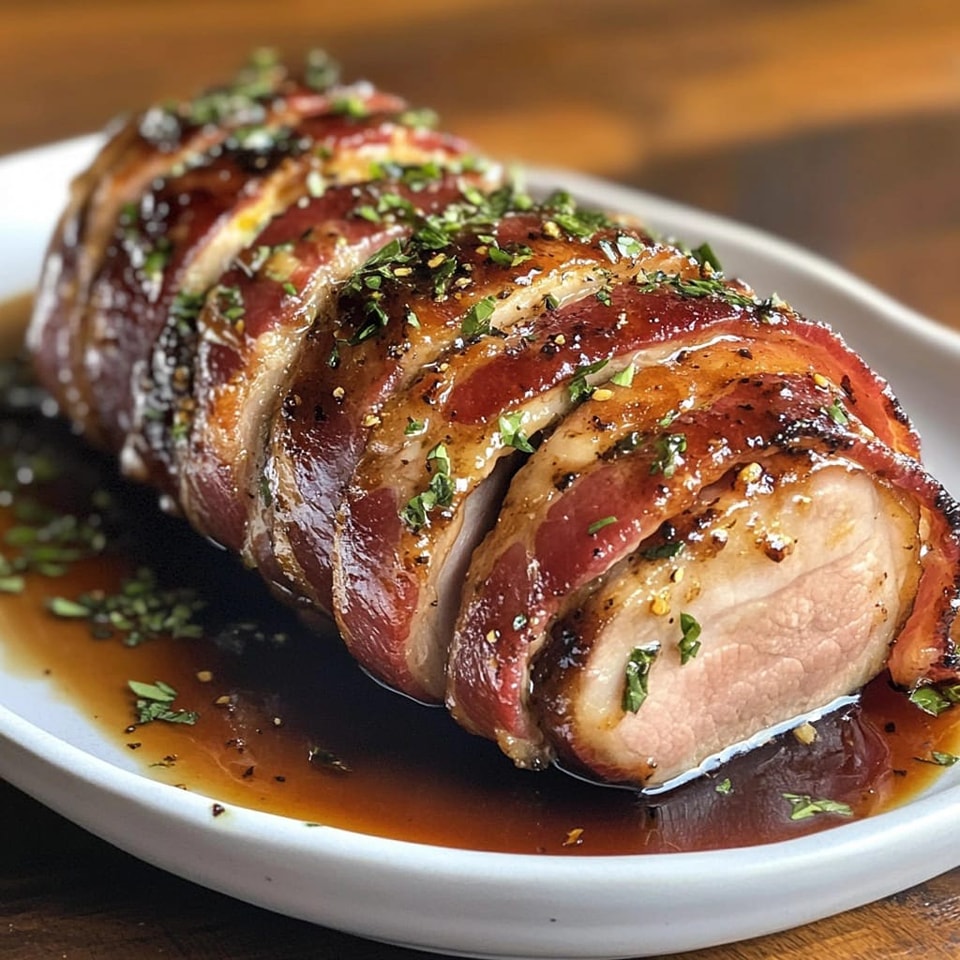ADVERTISEMENT
## **The Origins of Bacon-Wrapped Dishes**
Bacon has long been a prized ingredient in many cuisines around the world. Its rich, smoky flavor and crispy texture make it a popular addition to a variety of dishes. Bacon-wrapped recipes, in particular, have been a staple of American cooking for decades, often reserved for special occasions and holiday meals.
The origins of wrapping meats in bacon likely date back to the early days of cooking, when people discovered that wrapping lean meats in fat could help keep them moist and flavorful during cooking. Bacon, with its high fat content and ability to crisp up when cooked, became a popular choice for this purpose. Over time, bacon-wrapped meats like pork tenderloin, chicken, and steak became synonymous with indulgence and were often served at festive gatherings and celebrations.
In the case of **Glazed Bacon-Wrapped Pork Tenderloin**, the tradition of wrapping pork in bacon is elevated with the addition of a flavorful glaze, creating a dish that’s both savory and slightly sweet. The glaze adds depth of flavor, while the bacon enhances the texture, making for a truly unforgettable meal.
—
## **Ingredients for Glazed Bacon-Wrapped Pork Tenderloin**
To create this show-stopping dish, you’ll need a few key ingredients. Let’s break them down:
### **1. Pork Tenderloin**
The pork tenderloin is the star of this dish. This cut of pork is lean, tender, and mild in flavor, making it the perfect base for a bacon-wrapped creation. The tenderloin is usually long and cylindrical in shape, and it’s one of the most tender cuts of pork you can buy. It’s important to choose a pork tenderloin that is well-marbled with a small amount of fat, as this helps keep the meat juicy while it cooks.
### **2. Bacon**
Bacon is the perfect complement to the tender pork, providing a crispy, smoky contrast to the meat’s mild flavor. You’ll want to use good-quality bacon for this recipe, as the flavor and texture will make a big difference. Opt for thick-cut bacon, as it will hold up better during cooking and provide a satisfying crunch. The amount of bacon you need will depend on the size of the pork tenderloin, but typically, you’ll need enough bacon strips to fully wrap the entire tenderloin.
### **3. Glaze**
The glaze is what brings this dish to life. The sweet and savory sauce adds depth and richness to the pork, infusing it with layers of flavor. While there are many variations of glaze, a classic combination often includes:
– **Brown sugar**: Adds sweetness and helps create a caramelized exterior.
– **Balsamic vinegar**: Adds acidity and tang, balancing the sweetness of the brown sugar.
– **Dijon mustard**: Provides a subtle sharpness and complexity to the glaze.
– **Garlic**: Adds aromatic flavor and depth.
– **Soy sauce**: Brings a salty umami flavor to the glaze.
– **Olive oil**: Adds richness and helps to bind the glaze together.
You can also experiment with different flavors, such as maple syrup, honey, or citrus zest, to create a glaze that matches your taste preferences.
### **4. Seasonings**
To enhance the natural flavors of the pork and bacon, you’ll need some basic seasonings. These typically include salt, pepper, and dried herbs such as thyme or rosemary. You can also add garlic powder, onion powder, or smoked paprika for extra flavor.
For Complete Cooking STEPS Please Head On Over To Next Page Or Open button (>) and don’t forget to SHARE with your Facebook friends
